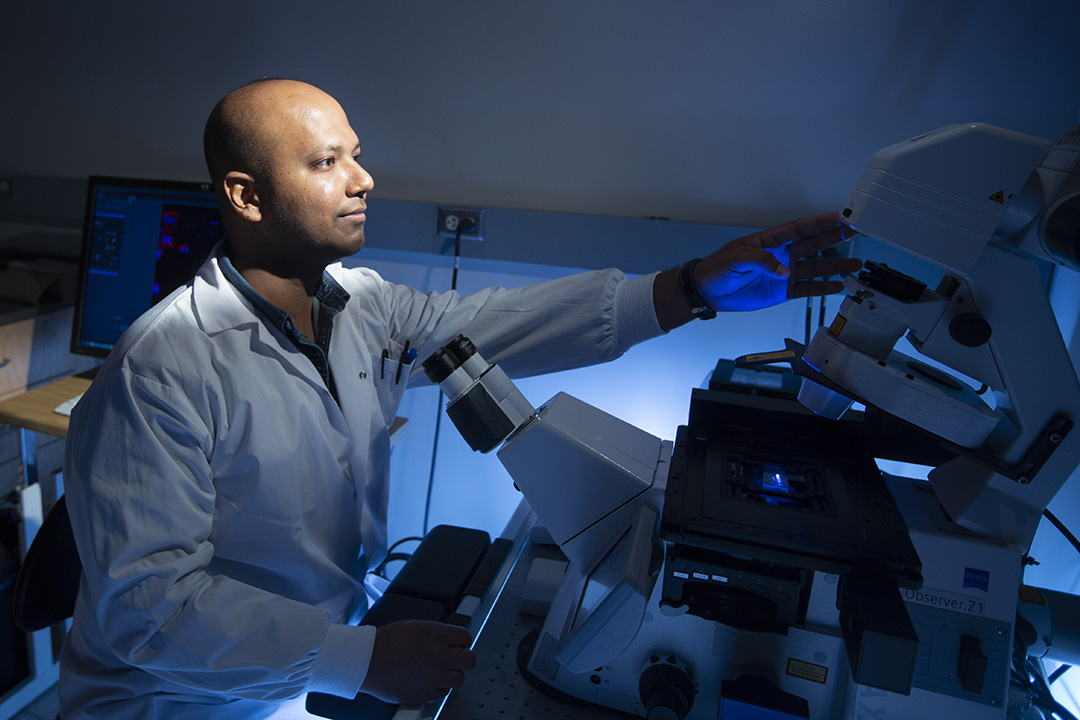
U of S study targets enzyme’s role in breast cancer
With one in nine women expected to develop breast cancer during her lifetime, someone close to you could get the potentially fatal disease, as University of Saskatchewan graduate student Raghuveera Goel knows too well.
By FEDERICA GIANNELLI“I saw my mother’s best friend passing away in just one month after she was diagnosed with breast cancer,” said Goel, PhD biochemistry student. “That’s why I was drawn to cancer research.”
After coming from India to join biochemistry professor Erique Lukong’s lab in 2014, Goel started investigating the role that an enzyme called SRMS may have in breast cancer. His initial results showed that high SRMS levels correlated with more aggressive cancer, and that SRMS appeared in the breast cancer cells of patients in larger quantities than in adjoining cells.
“Knowledge about SRMS cellular functions has been limited,” said Lukong. “The enzyme was discovered in 1994 but has been understudied for the past 20 years. We are getting close to solving the mystery.”
In a recently published article in the Molecular and Proteomics Journal, Lukong and Goel have been the first to identify and map more than 660 proteins targeted by the SRMS enzyme.
Read the full story on the University of Saskatchewan website.
